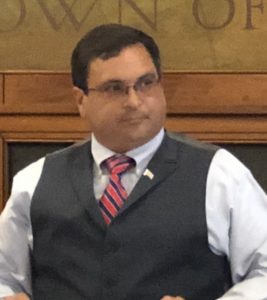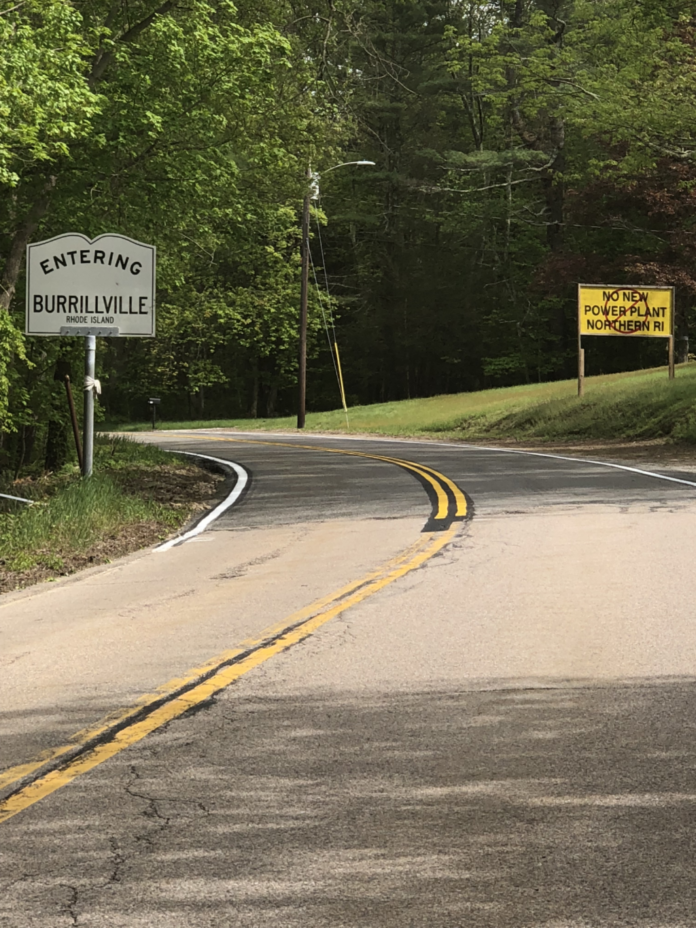BURRILLVILLE – When Invenergy Thermal first proposed building a power plant in Burrillville in 2015, town officials knew little about the complex world of energy production, and the community was like any other in a sleepy rural town: somewhat disconnected from the workings of their elected government.
Three and a half years later, many residents can tell you about the growth of the renewable industry, the problems with Rhode Island’s siting legislation and value of the forests at risk.
Elected officials and activists, united by a mutual cause, have come together not just to fight the proposal, but for other projects, bringing the community closer, according to many on the front lines.
Town Council President John Pacheco has witnessed the transformation first hand, and with the governing state board slated to issue a decision on the project as soon as Thursday, June 20, he looked back at the experience with NRI NOW this week.
When word first got out that a Chicago-based energy developer had plans to erect a 1,000-megawatt gas-burning facility in the town’s forests, residents, he says, were outraged. Crowds stormed town hall, unsure where to get answers or direct their anger.
“It was pretty rough at first,” said Pacheco. “We didn’t know what was going to happen on the council, and neither did they people in town. I don’t blame them for being scared and nervous, and needing to vent.”
For the next three years, the project would dominate town business as officials poured over details of a proposal so large, they felt unqualified to give answers. For Pacheco, the power plant alone became a part-time job, with 4-5 hours every week dedicated to everything from informational meetings with the developer, to legal sessions and public gatherings lasting long into the night.
“We had meetings that would go to 1 in the morning,” he said.
Gradually, council members became united in opposition to the plan.
And soon after, they realized they lacked both the legal expertise and resources to fight the $1 billion project.
In 2016, Gov. Gina Raimondo visited Burrillville to discuss the proposal, telling residents to “trust the process,” that would vet Invenergy’s plan.
Since then, the town council president says he and other members of the board have learned a lot.
“We’ve learned that to trust the process is very expensive,” said Pacheco. “We’ve learned that people in Providence don’t really care what happens in Burrillville.”
“We’ve learned that we have lots of friends in the rest of the state.”

It was Pacheco who first began efforts to garner support from other communities that would be affected by the plant. His first visit was to South Kingstown, where he knew Town Council President Abel Collins had a strong environmental record.
“As I went throughout the state and visited all those cities and towns, the thing that resonated the most was the lack of local control and the location,” said Pacheco. “It’s a very beautiful part of the state, and if we ruin it we can’t get it back.”
Before they were through, opponents would gather resolutions in opposition to the plant from 39 communities in Rhode Island, Massachusetts and Connecticut.
And as they worked together, previous political divisions began to seem less important in the shadow of a common enemy.
“I know we all thought that it was hellacious, but many of us in town now look at it as a blessing in disguise,” Pacheco said of the transformation from a town divided to a single, united oppositional force.
“I think that apologies have been made all around,” said Pacheco, pointing to projects that have since launched, such as the revitalization of the Assembly Theatre. “A lot of that is due to the fact that we’ve all gotten to know each other.”
Town officials eventually found a way to fund a legal battle against the developer, hiring attorneys to build a case with money garnered through a tax treaty with Invenergy itself.
At proceedings before the Energy Facility Siting Board, the state’s governing entity, town-hired attorneys worked with those from the Conservation Law Foundation, pointing to what they say is a lack of need for the plant, and irreparable damage it will do to the local forests.
The case they built, Pacheco says, was rock solid.
“I really feel the case the town and CLF has laid out is irrefutable,” he said.
“We’ve learned in the last four years that renewable energy has grown exponentially, especially here in New England. The price is dropping,” said Pacheco.
The council president notes that every environmental group in the state opposed the project, pointing out that it would break up the only remaining intact contiguous forest along the entire Eastern Seaboard.
“They would have to truck in millions of gallons of water,” said Pacheco. “It’s insane. How could anybody, after all the evidence and all the arguments, think this is a good idea?”
Pacheco says that indirectly, Invenergy has increased his knowledge of both the energy industry and his own community.
“We’ve learned what ISO means,” he said of the term for system operators. “We’ve learned that we can fill an auditorium.”
But other lessons, he says, left a bitter taste in his mouth.
“We’ve learned that Invenergy has been less than forthright and honest in their efforts,” said Pacheco. “I see a future for the town of Burrillville of litigation.”
His disappointment also extends to the governor’s office, and the laws that allow developers of such projects to give money to elected officials.
“She’s taken $1,000 a year from the owner and his wife alone, not to mention all the fundraisers they’ve had for her in Chicago,” Pacheco said of Invenergy.
“There’s a million reasons not to approve this, and only one reason why they would, and that has to do with money and politics,” he said. “If they approve the plant, I have to believe it was bought and paid for four years ago.”
Pacheco said he feels “cautiously optimistic,” that at least two out of three members of the EFSB will vote to deny the permit during deliberations later this week.
“We’ll know Thursday,” he said.
Editor’s note: on Thursday, June 20, the Energy Facility Siting Board denied Invenergy’s application to build the Clean River Energy Center.







